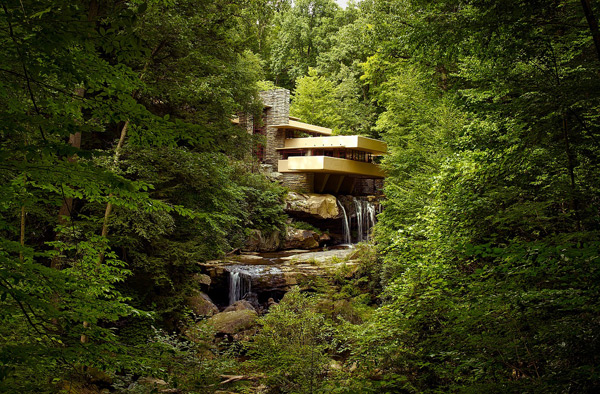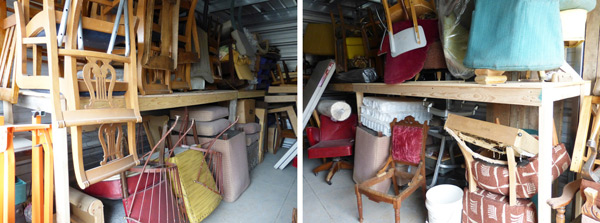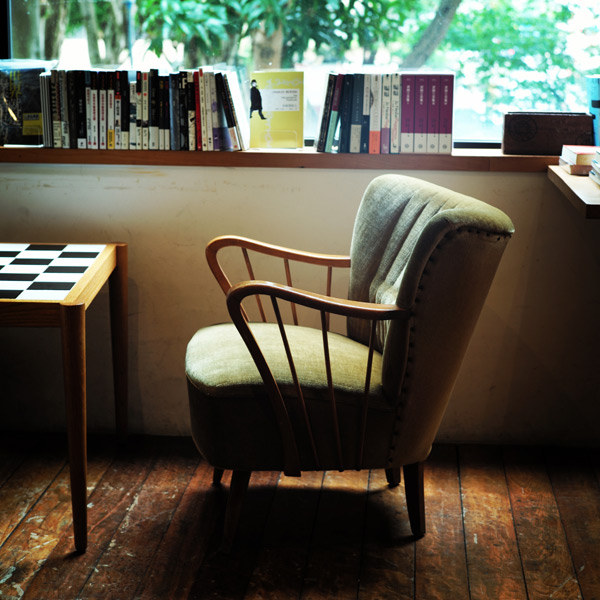Bio(what?)
The term “biophilia” means love of life or living systems, being attracted to all that is alive and vital, or the connections that human beings subconsciously seek with the rest of life. It suggests that we humans possess an innate tendency to seek connections with nature and other forms of life…

image ©Andreusk (Dreamstime)
Biophilic Design
In architecture, Biophilic Design is a strategy that seeks to reconnect people with the natural environment, considering one’s attitudes, feelings, ideas, memories, personal values and preferences.
Doing your own interior decorating? You may subconsciously apply biophilic principles in your choice of fabrics, artwork, upholstery and furniture placement.

Frank Lloyd Wright’s ‘Fallingwater’ embodies Biophilic Design (image: thanks to pixabay)
Upholstery’s place in Biophilic Design
Zero waste.
Zooming out to see the big picture: we’re on the brink of 2020’s. It’s time to acknowledge that we’re no longer in the industrial age, or even the information age.
Are we entering the biophilic age? I hope so.
William McDonough famously said, “design is the first signal of human intention”. So why are we STILL producing SO much waste? A recent story “a coalition of giant brands poised to change how we shop forever” nails it:
… disposability is convenient and affordable. (from Fast Company)
This article gives me hope. Our evolution from recycling to returnable is (finally!) encompassing more than just glass bottles and aluminum cans. I’m excited to see what will follow.
Returnable furniture: boneyard to business model.
Let’s say your tastes have changed:
- What if there were a way to return furniture you no longer want instead of sending it to the landfill?
- What if exchanging your old furniture for a new style was as commonplace as car trade-ins are today?
- What if you could take your piece back to the store (better yet, call for pick-up!) and have it (OR a piece chosen from a range of other styles available for restoration) refurbished with your choice of new fabric and returned to you better than new…
Oh wait. We already HAVE that! in upholstery shops!
Well… Not quite.
Today’s upholstery business model takes your old piece and makes it new again. So what happens to the unwanted pieces?
I’ve talked with plenty of upholsterers, makers and creatives who have a ‘boneyard’ – a place where they store their dreams of what could be. Furniture that someone didn’t want. Picked up on the side of the road, at a thrift shop, or given to them by a well-meaning friend.
I have a boneyard myself:

The painful part is when the space is full, I have to turn perfectly good furniture away. Where does it go? Probably the landfill, and that’s a one-way street. It makes me sad.
A step in the right direction (a software solution)
Here’s where the industrial age + information age meets the biophilic age: Software is facilitating connections between upholstery manufacturers and interior designers at BuildLane. Even though this particular model is not an immediate answer to the pain of tossing old furniture, I’m excited about the possibilities!
To me this looks like a first step toward a model that ultimately connects the ‘boneyard’ furniture with the end consumer AND upholsterers to do the work. Whatever this ultimately looks like, this first step is proof that the craft of upholstery will most certainly play an important role in the future of zero waste furniture.

A well-worn favorite sets the tone in this room
The collaborative model meets Biophilic Design
I have to admit that I had not heard of ‘biophilic design’ until I listened to Michelle Williams’ podcast episode, Sustainable Design Through Connectedness, in which she interviewed Renee Carman of Mandeville Canyon Designs.
Living and creating memories within a place, you build personal connections and gain a sense of belonging and purpose, which in turn lends significance and meaning to your life.
Renee has joined with other local talent in her area to form a cooperative that serves as a resource for home design in her community. We need only to look around in our own communities to find examples popping up everywhere – cooperatives, community gardens, maker spaces, and more.
I’d love to hear your thoughts on Biophilic Design and collaborative communities. Please share your perspective in the comments below.
Note: some of this post’s content was sourced from Wikipedia – read more about Biophilic Design and Biophilia.
Join NaturalUpholstery.com’s mailing list to receive our monthly newsletter featuring news in the world of upholstery, tips, creative inspiration, and resources for making.
Leave A Comment